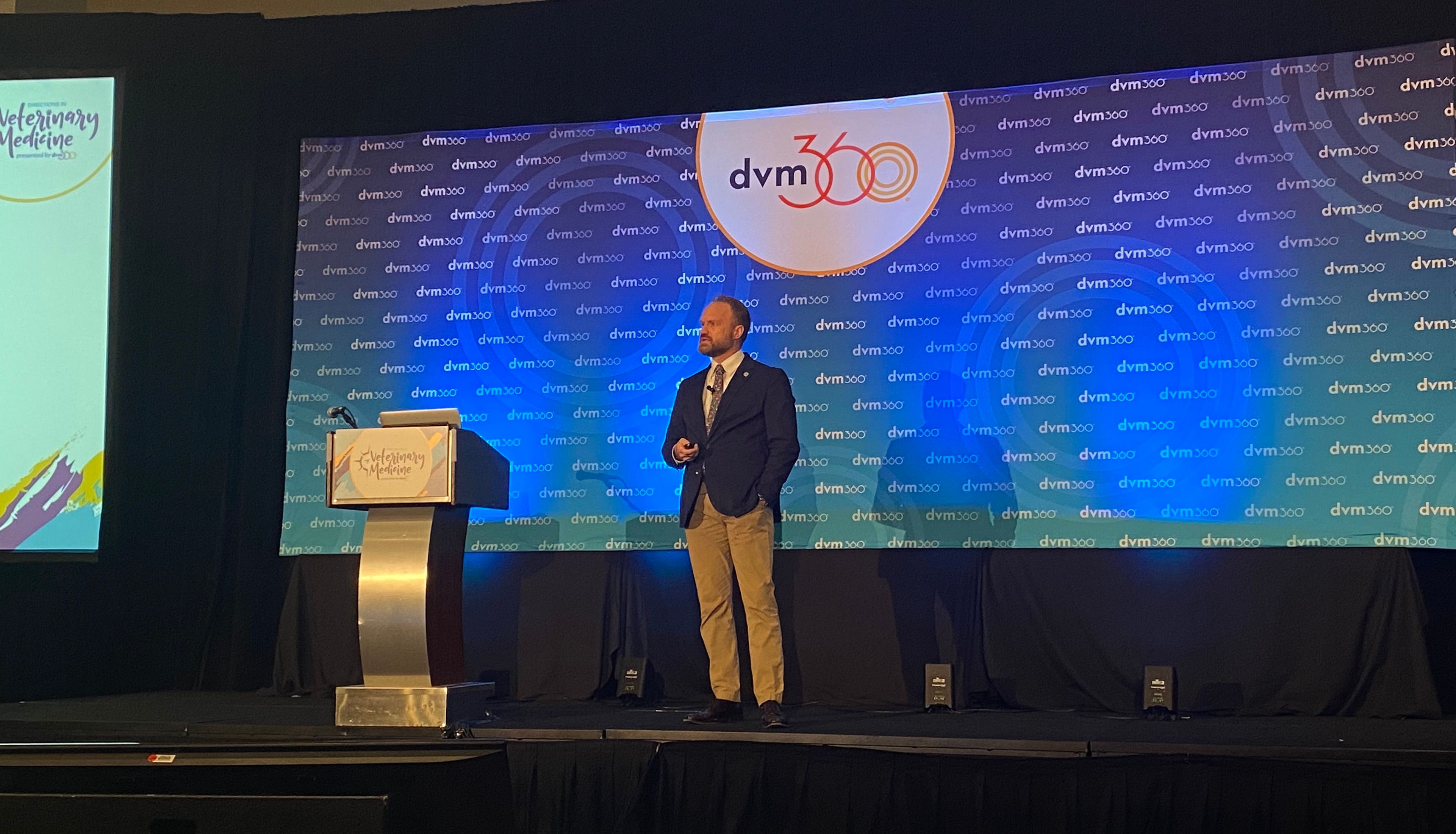Offering a flexible practice schedule with telemedicine
Aaron Smiley, DVM, presented the second keynote session at the dvm360® Directions in Veterinary Medicine Conference in Indianapolis
Credit: Sydney Yankowicz/dvm360®
Aaron Smiley, DVM, presented the second keynote session at the dvm360® Directions in Veterinary Medicine Conference.

On the second day of the dvm360® Directions in Veterinary Medicine Conference in Indianapolis, Indiana, Aaron Smiley, DVM, delivered a keynote address that addressed the problems the veterinary profession is facing with burnout. Through his lecture, Smiley raised a potential solution by integrating flexible work in your weekly schedule. He went on to explain the benefits of using telemedicine as well as the obstacles that get in the way of transitioning from free to paid telemedicine.
Burnout in the veterinary profession
Smiley stressed that most veterinarians desire a flexible work schedule, but a typical work week in the clinic can be consistent and strict. In the beginning of the presentation—entitled “Remote Work in Vet Med? Yes! Improve Job Satisfaction, Recruitment, and Happiness”—Smiley asked the audience, “What is a problem of veterinary medicine?” He then shared some of his own answers: “We've got a high demand for veterinary services and a high number of veterinarians want to leave the profession.”1
Burnout has increased since 2020 and veterinarians are feeling overworked, according to Smiley.1 He stated that the percentage of veterinarians who want to leave the profession is concerningly high, and that culture and work life balance are 2 reasons a veterinarian often considers leaving the profession.
How to integrate telemedicine into your practice
How do you solve the problem of burnout and the increase in veterinarians leaving the profession? Smiley said, “creating healthy and supportive work environments for all employees” is one place to start, but how can that be achieved?
Combining telemedicine with a traditional, in-person practice can help create a flexible work schedule. This flexible schedule can come from a personal balance between in-practice work and asynchronous telemedicine. Smiley reminded veterinary professionals that telemedicine, “isn't the solution for everything, but it might be a solution [for rigid work schedules].”1 He also highlighted that a flexible work schedule can be an alternative to the traditional 9 to 5, 40-hour work week, and would allow employees to vary their arrival and departure times by changing a preferred amount of work time to asynchronous virtual care.
To start using telemedicine, Smiley offered several pieces of advice for what veterinarians need to know, as follows:
- Use a text messaging technology to communicate to clients and complete remote exams and diagnoses. Smiley states, “You have to use SMS, you have to use text messaging, that with videos with pictures… Americans don't like to download apps, they forget their password. How many apps do you use routinely? It’s probably less than 10. If the client has to download an app, the compliance [for telemedicine] is going to go way, way down.”1
- When working remotely, do not schedule appointments. He states that telemedicine works best if it is asynchronous, to ensure there is more flexibility and choice when creating a new work schedule. He gives an example of the benefits to asynchronous by stating, “I have the freedom to put it down and walk away. If I'm on the telephone, I can't do that.”1
- Become comfortable with remote diagnosis. “If you're going to offer telemedicine you need to make sure that you're comfortable with [giving] a remote diagnosis. My guess is you already [diagnose remotely], but before you do paid telemedicine, you need to be comfortable with a remote diagnosis,” Smiley said.1 However, he brought up the point that most veterinarians are already diagnosing remotely. From his personal experience, Smiley shared that family and friends often send him pictures and videos of their pets’ health conditions. This example helped explain that remote diagnosis is more common than some might realize. There are a lot more diseases that can be diagnosed and managed remotely because of the smartphone and higher camera quality.
Conclusion
Smiley ended his presentation by reiterating his main point of creating new work schedule options for veterinarians. He stated, “What's the point? The point is we're trying to get to a flexible workspace.”1 He demonstrated his own weekly schedule and how he used telemedicine to change his traditional in office work. He explained how he can have the personal choice of working in clinic in the beginning of the day and finish the day remotely.
Reference
Smiley, Aaron. Remote work in vet med? Yes! Improve job satisfaction, recruitment, and happiness. Presented at: Directions in Veterinary Medicine; June 24-25, 2022; Indianapolis, Indiana.